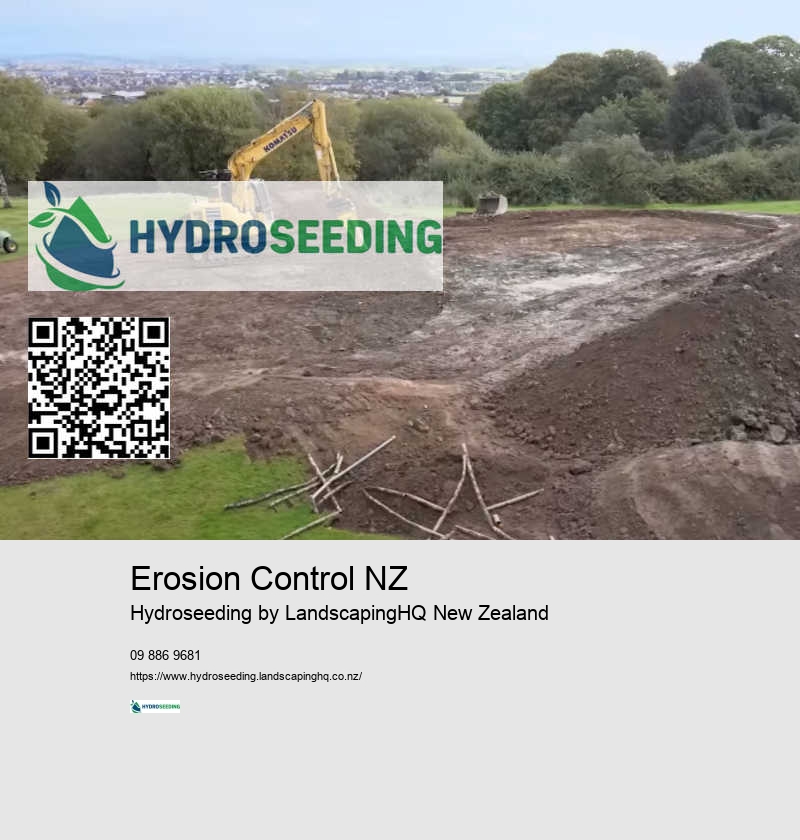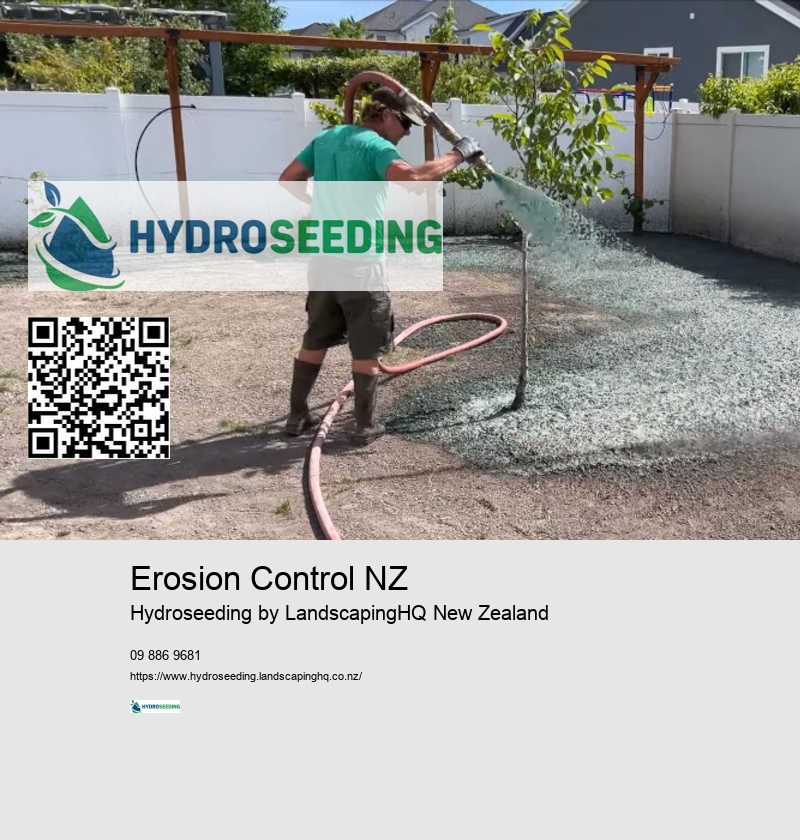

On the other hand, early autumn, from March to May, provides cooler temperatures and consistent moisture from occasional rains. Contact us today to get started! This technique is frequently used for sports fields, parks and erosion control. As a team dedicated to landscaping excellence, we understand the fundamentals of hydroseeding and its transformative impact on various landscapes. Mulch helps retain moisture, protects seeds, and prevents erosion. Hydroseeding grass
Hydroseeding allows us to quickly and evenly cover large plots. This step ensures that the soil can support the seed's growth, providing the essential nutrients they need to thrive. Hydroseeding is an efficient method to cover large areas quickly, making it perfect for corporate campuses, sports fields, and public parks. Achieve lush green landscapes effortlessly - Learn how Hydroseeding New Zealand can make a difference. Moreover, it's adaptable to various terrains, including slopes and difficult-to-reach areas, providing excellent erosion control.
Weeds compete with the grass for nutrients, water, and sunlight, potentially stunting growth and compromising the overall health of the lawn. The mixing tank blends water, seed, mulch, and fertilizer into a uniform slurry. Together, let's embrace an innovative approach towards a more sustainable future. This combination helps establish strong root systems before the winter months.
High winds, common in coastal regions and Wellington, may necessitate protective measures to prevent erosion and seed displacement. Hydroseeding isn't just about spreading seeds; it combines science and artistry to produce lush, green lawns efficiently. Hydroseeding, in addition, is highly adaptable. Whether it's a residential property or a commercial development, our hydroseeding solutions offer a sustainable approach to hillside and slope management.
Its efficiency can result in savings, particularly when you consider reduced watering and less reseeding. This is especially useful for areas that receive a lot of foot traffic and where traditional seeding may fail. If necessary, applying a selective herbicide can help control weeds without damaging the grass. We work closely with local councils to find solutions that are tailored to their needs.
Keep a consistent schedule.
Hydroseeding doesn't only involve spreading seeds, it also combines science with artistry to produce lush green lawns. Moreover, our eco friendly techniques are aligned to sustainable landscaping practices. Hydroseeding provides a dense and hardy grass cover that can recover quickly from wear and tear. This method is ideal for larger areas and slopes, providing rapid germination and erosion control.
That's why we offer commercial hydroseeding applications designed to deliver rapid and lush growth. In New Zealand, the use of hydroseeding is not limited to just lawns. We cannot overlook the importance the spray nozzle.
The traditional method of seeding involves the spreading of seeds by hand or spreader directly on to the soil. The slurry mixture, which includes seed, mulch, fertilizer, and water, ensures optimal seed-to-soil contact, promoting rapid growth and reducing erosion, a common issue in expansive park areas. We might need to grade the land slightly or incorporate drainage solutions if we notice any problematic areas.
This application method allows us to cover large areas quickly and ensures an even distribution of seeds, which leads to more uniform growth. We choose seed blends that are best suited for the local climate and soil conditions, ensuring optimal growth and stabilization.


They endure heavy foot traffic and varying weather conditions. This is especially true when compared to hand-seeding or traditional sod. However, its efficiency can lead to savings down the line, especially when considering reduced watering needs and less reseeding. Our system provides an even distribution for seed, mulch, and fertilizer. Regular irrigation helps the grass become thick and sturdy, making it difficult for weeds.
Our machinery is maintained in top condition prior to every project. Our customized approach is the best way to achieve optimal results. By choosing hydroseeding, you're opting for a sustainable method that delivers robust results while protecting and enriching the landscape. This helps accelerate germination and root establishment.
It's important to fertilize your lawn about six weeks following hydroseeding. One frequent error is watering inconsistently. Based on these results, we can incorporate organic matter like compost to enhance soil fertility. If we prioritize speed, coverage, and erosion control, hydroseeding may be the way to go.
Meanwhile, the warmer North Island often experiences milder winters, providing a longer growing season. Post-seeding care is equally important. We bring years of knowledge and skill to every project, giving you confidence that your landscape is in capable hands. Environmental impact is another benefit worth noting.
Our hydroseeding services allow councils to quickly and effectively establish grass in large areas, ensuring that parks remain inviting and vibrant places for the community to enjoy. Let us help your business make a lasting impression with a landscape that speaks volumes. For playing fields, durability is as important as appearance. The mulch also contains a tackifier, helping the mixture adhere to the soil, which is particularly beneficial on slopes or uneven terrains. The even distribution of seeds also minimizes patchiness, resulting in a consistent, lush appearance.
We should continue to fertilize every six to eight weeks during the growing season. We work closely with you throughout the project, ensuring your vision comes to life. Hydroseeding provides robust grass coverage that can withstand heavy foot traffic, making it ideal for playgrounds, sports fields, and general landscaping around school grounds. This makes it possible for councils to allocate resources towards other important community projects without compromising on the quality of green spaces.
We should hydroseed during the best growing seasons-spring and early autumn-when conditions favor grass over weeds. Let's follow the recommended fertilization guidelines, applying the right type and amount at the appropriate time. Spring, spanning September to November, offers increasing daylight and warmth, which stimulates seed growth. Hydroseeding in New Zealand customizes each project according to your individual needs.
These can be labour-intensive and time consuming. Hydroseeding is ideal for stabilizing slopes because it creates a protective barrier over the soil that prevents erosion by water and wind. Proper soil preparation involves removing debris, testing pH levels, and ensuring the soil is well-aerated. Hydroseeding allows us to cover large areas efficiently while maintaining control over seed distribution.

LandscapingHQ's hydroseeding services are an investment in quality and expertise that will last for many years. Maintaining a hydroseeded lawn, with its vibrant greenery and robust growth, requires a strategic approach to ensure its longevity and health. At Hydroseeding New Zealand, we understand that these areas pose unique challenges, such as erosion, poor soil retention, and difficult access. Proper care after hydroseeding is crucial for achieving the best results, and that's where our watering guidelines and maintenance tips come in handy.
Additionally, mulch helps to retain moisture. This is especially beneficial for properties that have slopes or are prone to runoff. By seeding in autumn, we give grass a head start to develop, ensuring a lush lawn come spring. Mulch and soil stabilizers are effective in enhancing seed retention. Additionally, the mulch component aids in moisture retention, providing a conducive environment for seeds to sprout and establish roots quickly.
One of the most important benefits is how quickly the grass grows. One of the key advantages of hydroseeding large areas is its speed. Moreover, traditional seeding might not achieve the same degree of erosion control as hydroseeding, potentially leading to patchy growth or seed displacement during heavy rains. Our expertise in hydroseeding enables us to customize solutions that meet your needs.
We strategically choose the best time for hydroseeding, often coinciding with optimal growing conditions. Regular mowing encourages denser growth and helps prevent weeds from taking over. Hydroseeding can be a great solution for homeowners who want a fast, cost-effective and efficient way to establish beautiful grass. The heart of any hydroseeding operation is the hydroseeder itself.
In the hotter northern regions, hydroseeding is likely to continue into late fall. Grass types We're excited about the potential integration of drones and precision agriculture techniques, which could allow for more precise application and monitoring of seeds and growth. After-seeding attention is equally as important. By doing this, we create a solid foundation for our seeds to thrive.

Hydroseeding involves applying a slurry mixture of water, seeds, fertilizer, and mulch to the soil using a high-pressure sprayer. The mulch retains moisture and protects the seeds, promoting faster germination and growth. This method allows for uniform seed distribution and helps prevent soil erosion, as the mulch holds the mixture in place even on slopes or uneven ground. Within a week or two, you�ll see grass sprouting, with full establishment achieved in several weeks under ideal conditions. Hydroseeding New Zealand specializes in effective hydroseeding applications that yield quick, lush results. Contact us for more details on our process and how it can work for your landscape.
Hydroseeding is generally safe for the environment, using natural materials and minimizing the need for chemical treatments. The biodegradable mulch and water-conserving properties make it an environmentally conscious choice. Hydroseeding New Zealand prioritizes eco-friendly materials in all our projects.
Topsoil can enhance hydroseeding results, especially if the existing soil lacks nutrients or has poor structure. A thin layer of quality topsoil can improve seed-to-soil contact and provide a nutrient-rich environment for faster growth. However, hydroseeding can still work without topsoil if the ground is prepared properly. Hydroseeding New Zealand can assess your soil and recommend whether adding topsoil is necessary for your project. Contact us to learn more.
Hydroseeding costs in New Zealand vary based on the area size, terrain, and specific requirements, but prices typically range from NZD 3 to 6 per square meter. This includes seed, mulch, fertilizer, and labor. Hydroseeding is often more economical than sod for large areas and provides long-term value. For a customized quote, contact Hydroseeding New Zealand, and we�ll create a cost-effective plan for your lawn needs.
Fixing a bumpy lawn often involves leveling the ground, adding topsoil where needed, and reseeding or hydroseeding. Aerating the soil and filling low spots can also help create a smoother, even lawn. Hydroseeding New Zealand offers professional lawn leveling and hydroseeding solutions to help achieve a pristine, even lawn.